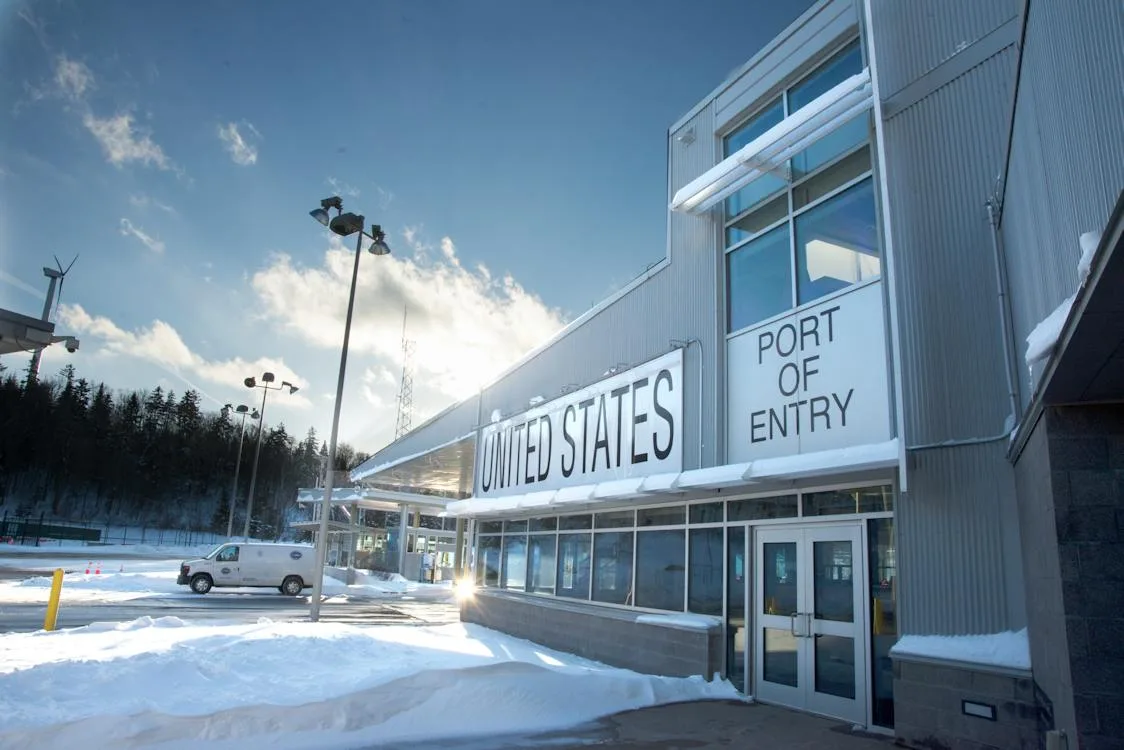More asylum claims, illegal crossings along U.S.-Canada border, despite the dangers
Image source: Pexels.com
Greetings, cherished readers! I want to talk to you today about a phenomenon that has been going on for a while, but in 2023 it has really gotten bigger. I’m referring to those who attempt to enter Canada illegally or seek refuge in the United States, or who attempt to cross the northern border illegally.
Given how difficult the terrain is and how cold the weather is, you might be asking why someone would do it. Actually, there are a lot of them, and they’re not usually what you might imagine. I’ll try to explain some of the motivations for these immigration in this essay, along with the difficulties they encounter and the ramifications for both nations.
Factors affecting the choice to cross the border
Experts say that there are two primary categories of migrants that cross the border: those who come for economic reasons and those who come for asylum. People who run away from their native nations because of persecution, violence, or breaches of human rights are known as asylum seekers. Those that migrate economically are those who go to another country in search of better opportunities—like jobs, education, or health care.
The U.S.-Canada border is 5,525 miles long, the longest in the world. With a variety of environments, climates, and civilizations, it is also among the most diversified. While certain areas of the border are more isolated and porous, others are well fortified. For the migrants who choose to cross it, this provides distinct chances and risks.
Several factors impact the choice to cross the border, including:
The state of American and Canadian politics
Depending on the policies and attitudes of the governments and the people, certain migrants may feel safer or more welcomed in one nation than the other.
The ease of access and availability of legal routes
Certain migrants, for instance, might have sponsors or relatives in another nation who can assist them in applying for visas or refugee status, while others might not have any legal choices or would have to wait a long time for their application.
The information—both true and false—that travels online and among immigrant groups
Some migrants might not be aware of the risks or the consequences, while others might have heard rumors or been made false promises about the advantages or convenience of crossing the border.
The unique situation and tastes of every immigrant
While some migrants may prefer the language, environment, or lifestyle of the other country, others may have family, friends, or cultural ties in the host nation.
The difficulties and risks involved in crossing borders
it is not safe or easy to cross the border. When trying to cross the border, migrants encounter numerous difficulties and risks, including:
The terrain and the weather
The border region may get extremely cold, particularly during the winter when storms can make the weather worse, and temperatures can plummet below zero. There are lakes, rivers, woods, mountains, and other rough landscape features. Unprepared or ill-equipped migrants run the risk of hypothermia, frostbite, dehydration, and other injuries.
The traffickers and the officials
U.S. Customs and Border Protection (CBP) and the Royal Canadian Mounted Police (RCMP) police the border, and they have the authority to arrest, detain, or deport any migrants who are found crossing unlawfully. Hiring smugglers, who charge exorbitant fees and frequently take advantage of, mistreat, or desert their clients, is one tactic used by migrants to try to avoid discovery.
The ramifications for society and law
Illegal border crossers may be subject to fines, jail time, or deportation orders, among other legal repercussions. Additionally, they could experience negative social outcomes like stigma, exclusion, or discrimination. When applying for asylum, migrants may have to go through a drawn-out and difficult process with no assurance of approval or safety.
The United States and Canada’s implications
There are ramifications for both Canada and the United States from the rise of illegal border crossings and asylum applications, including:
Security and humanitarian concerns
It is the duty of both nations to safeguard the safety and sovereignty of their respective areas while also defending the human rights and dignity of migrants who cross the border. Collaboration and coordination between the two nations as well as the various agencies and groups in charge of managing the border and refugee system are necessary for this.
The discussions on politics and society
As a reflection of their own identities, beliefs, and interests, each nations have distinct viewpoints and ideas about how to handle the migrant phenomenon. Depending on the degree of discussion, supporting data, and empathy, this may spark political and societal discussions that are either productive or polarizing.
Integration’s prospects and difficulties
The diversity and potential of the migrants that cross the border present a challenge for both countries as well as a chance to gain from giving them the assistance and resources they need to integrate. This calls for an all-encompassing, inclusive strategy that takes into account the requirements, obligations, and rights of both the host communities and the migrants.
In summary
As you can see, there are many facets and a complex relationship between asylum petitions and unauthorized border crossings between the US and Canada. It’s not a case of one side being right and the other wrong, black and white. Every person in this predicament has a story, a purpose, and hope since it is a human issue.
I appreciate you reading, and I’ll see you later!





0